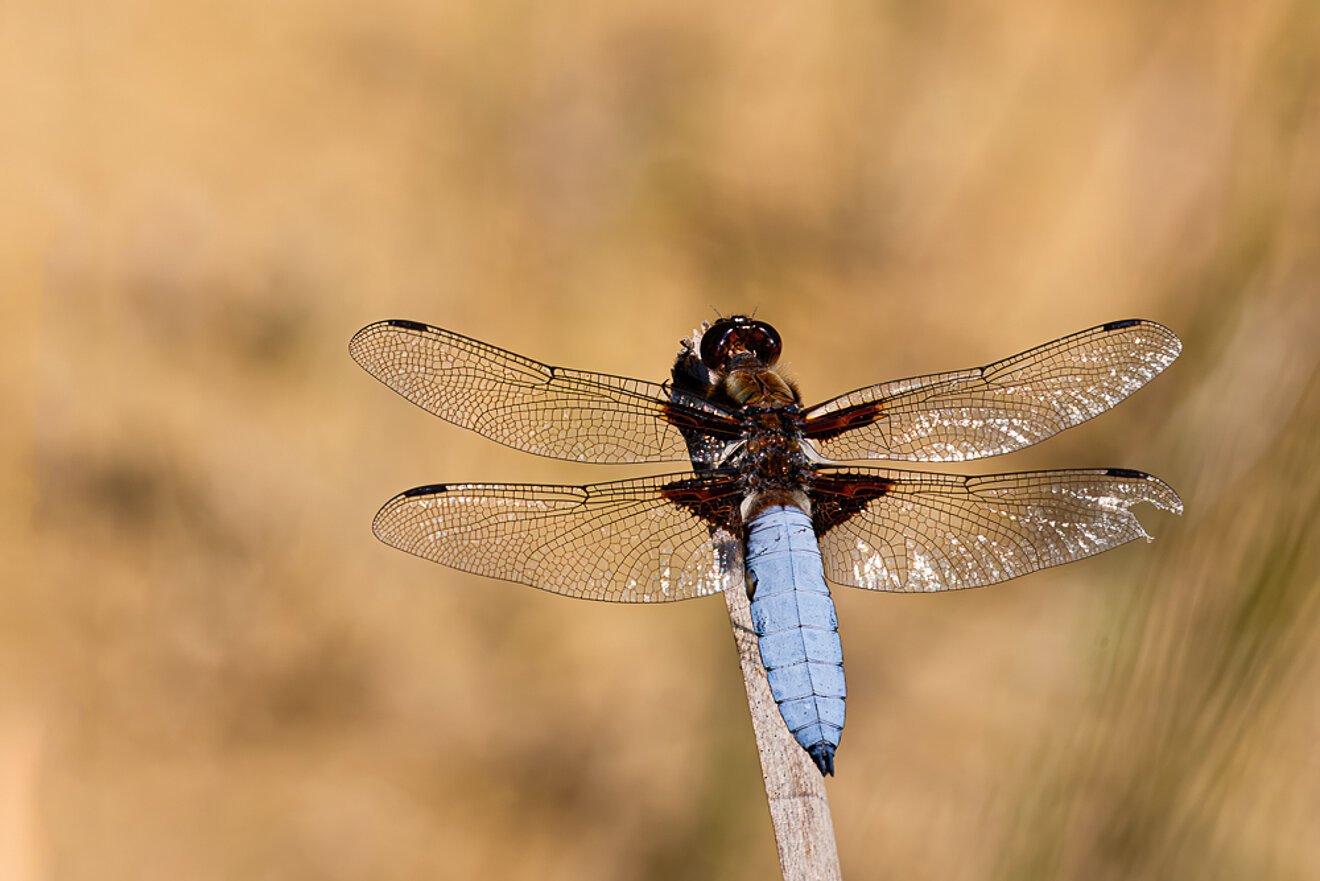Dragonflies are called "jewels of the air" by some. Many of them look beautiful - the demoiselles, emerald dragonflies, emperor dragonflies and what they are all called. They are great flight artists that can not only fly very fast (up to 50 km/h), but can also stop in mid-air or even turn on the spot.
Their appearance, their flying skills, the fine structure of their wings make them a fascinating photo subject.
However, two facts should be mentioned first:
- Dragonflies are harmless. They cannot sting and a possible bite, which occurs out of fear, is not painful.
- Dragonflies are protected. They must not be caught, injured or even killed.
If you want to photograph dragonflies, the first thing you think of is a macro lens. There is one thing to bear in mind when choosing a lens: Dragonflies - like all other animals - have a flight distance, which means that they flee if we get too close to them. How great this distance is depends on several factors and can only be tested.
A macro lens should therefore have a longer focal length. Lenses from 100mm upwards are good. The speed of the autofocus is important when photographing flying insects, as some are quite fast.
But there is an alternative to macro lenses: telephoto lenses. 300mm focal length, 600mm or (with teleconverter) even more. A longer focal length brings greater magnification, but also reduces the depth of field.
Nevertheless, a longer focal length has 2 advantages:
- The distance to the dragonfly (or to the animal in general) is larger and reduces the flight reflex.
- Often, the dragonfly cannot be reached at all because it is in an area which is not accessible.
Some dragonflies are "hunters", i.e. they hunt their prey from a fixed place and return again and again. These are, for example, the banded damselfly, the four-spotted damselfly or the large blue arrow. These are often seen sitting on branches or on the ground. I usually use a telephoto lens for these shots so that I can keep a distance from the animals and not scare them away. Focal lengths of 100mm and more are interesting here, I also use 600m or 840m, depending on the distance... Here you have to take into account that a longer focal length leads to a shallower depth of field.
When autofocusing, I go for one sensor point or a maximum block of nine points so that no interfering elements confuse the autofocus. \n Exposure time and aperture depend on the focal length. With a focal length of 600mm, I set the exposure time to 1/800 s, usually at f/11. The ISO value is set by the camera, which works relatively well with the Canon EOS 5D III.
I have a special howto for capturing dragonflies in flight dragonflies in flight
